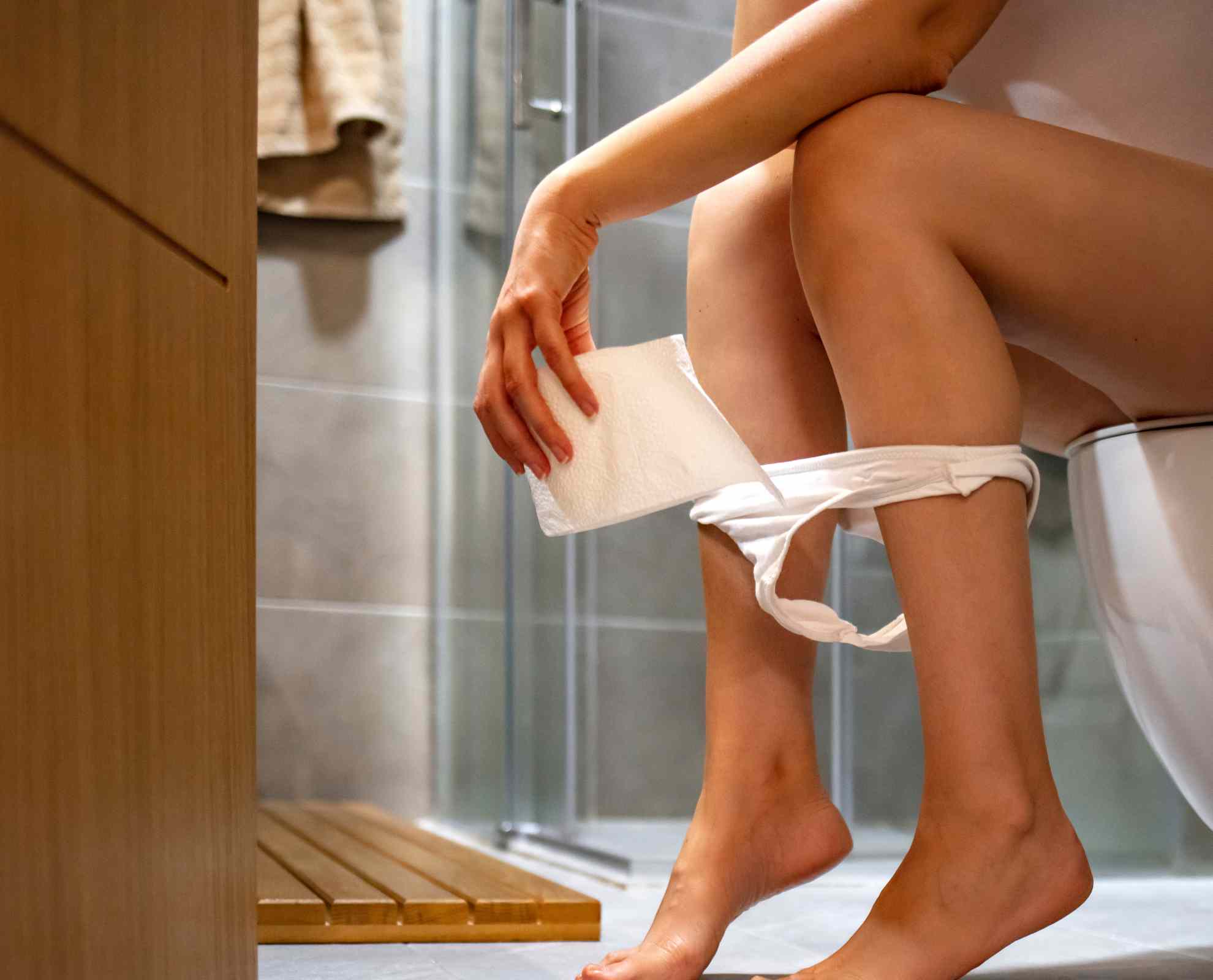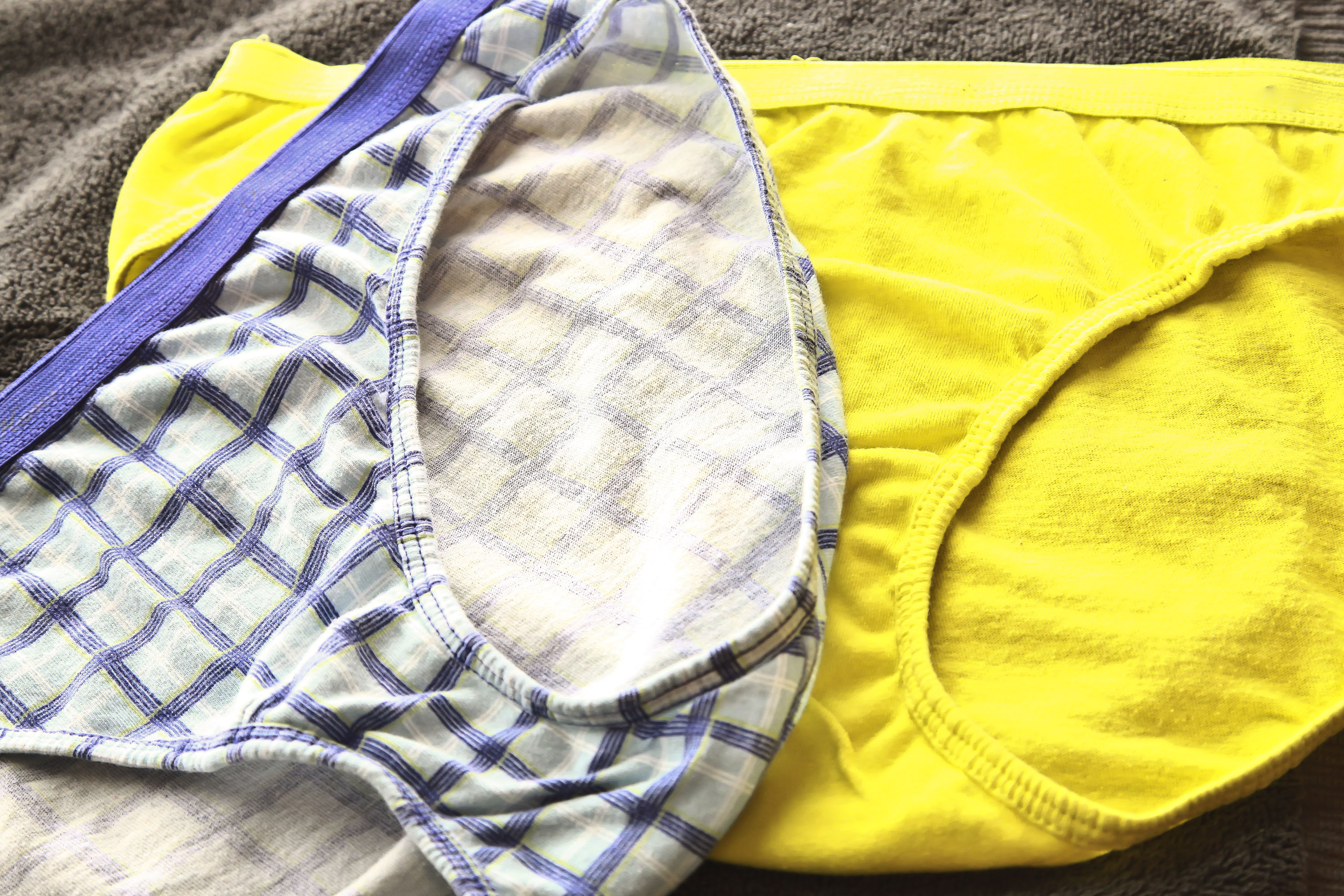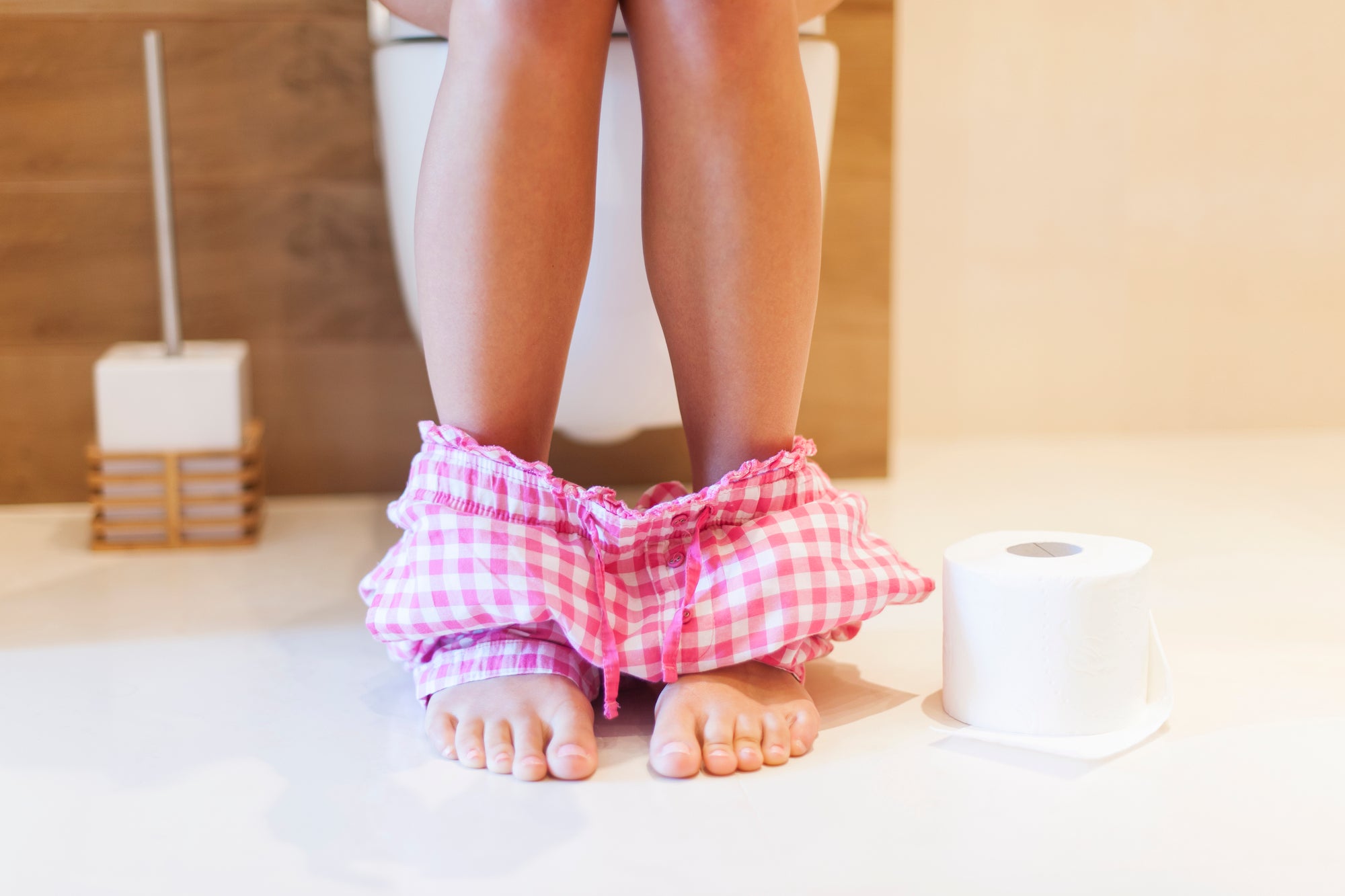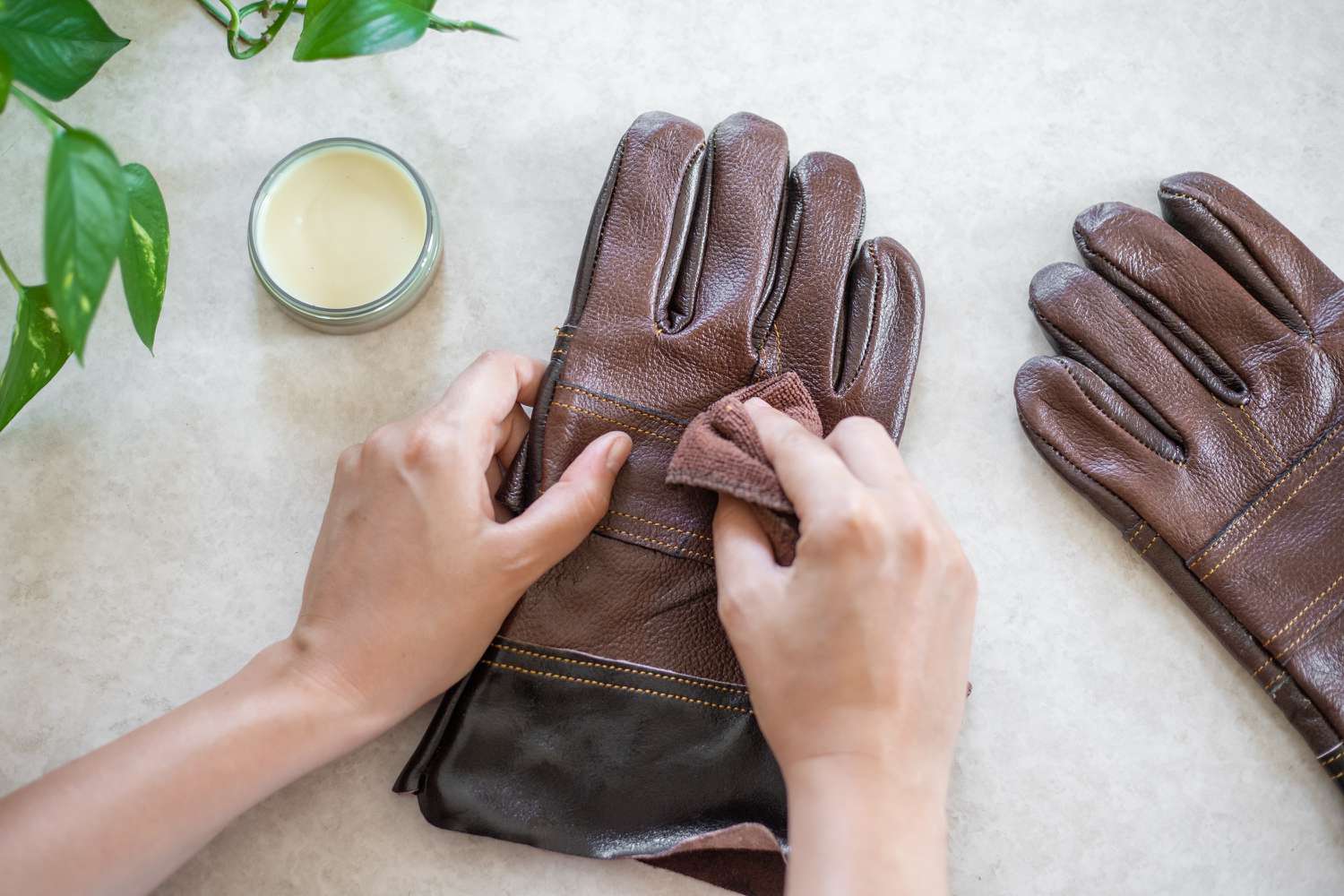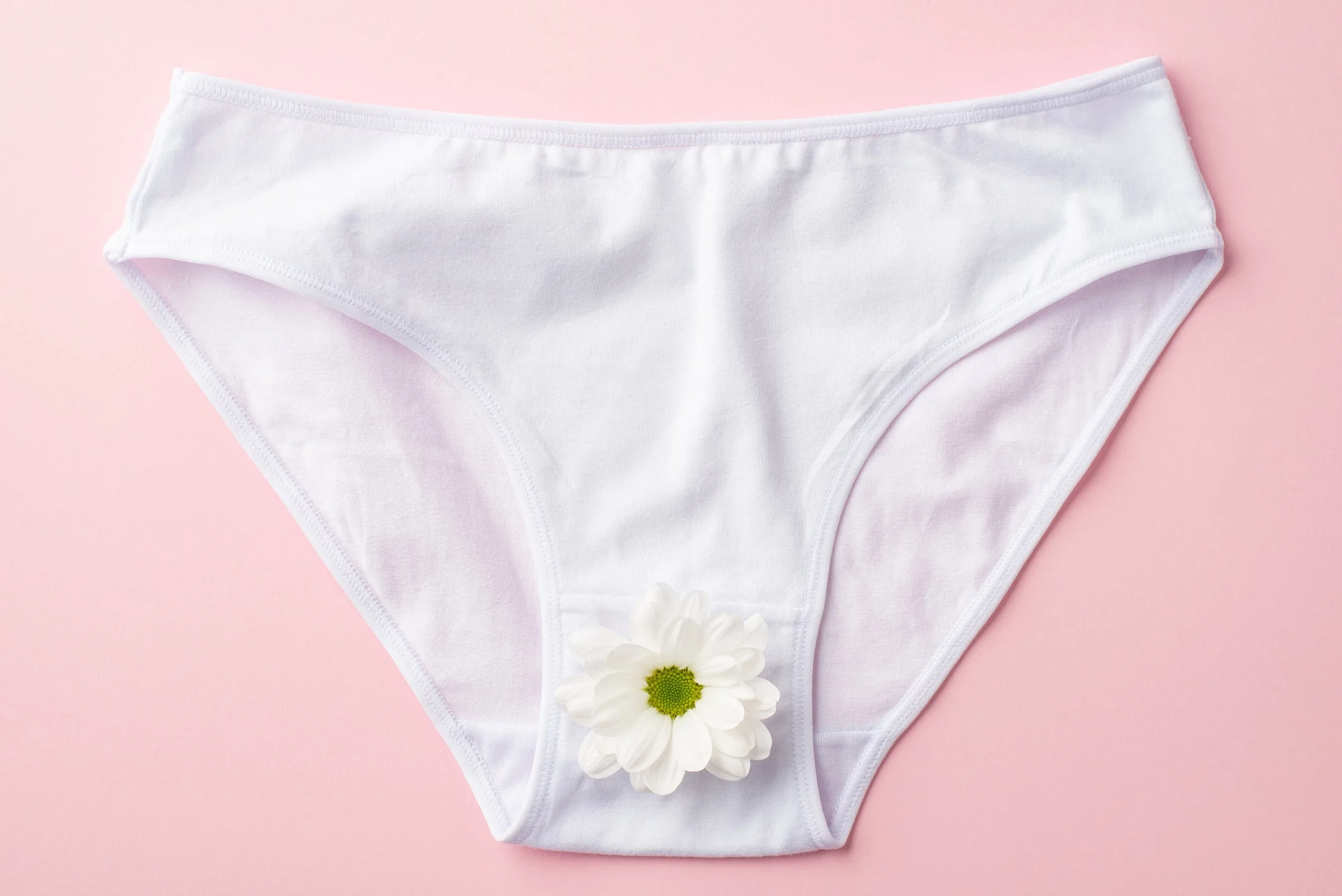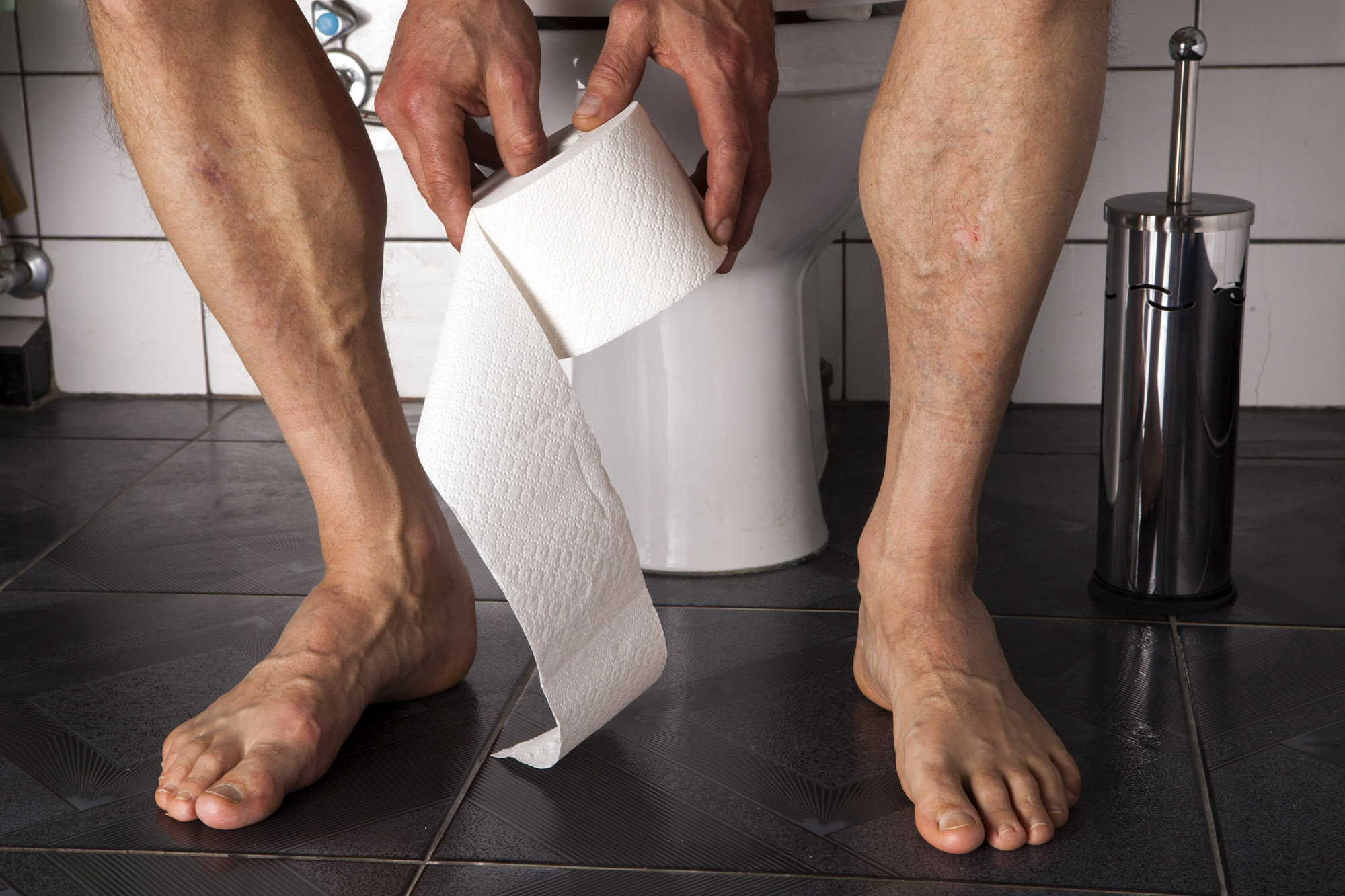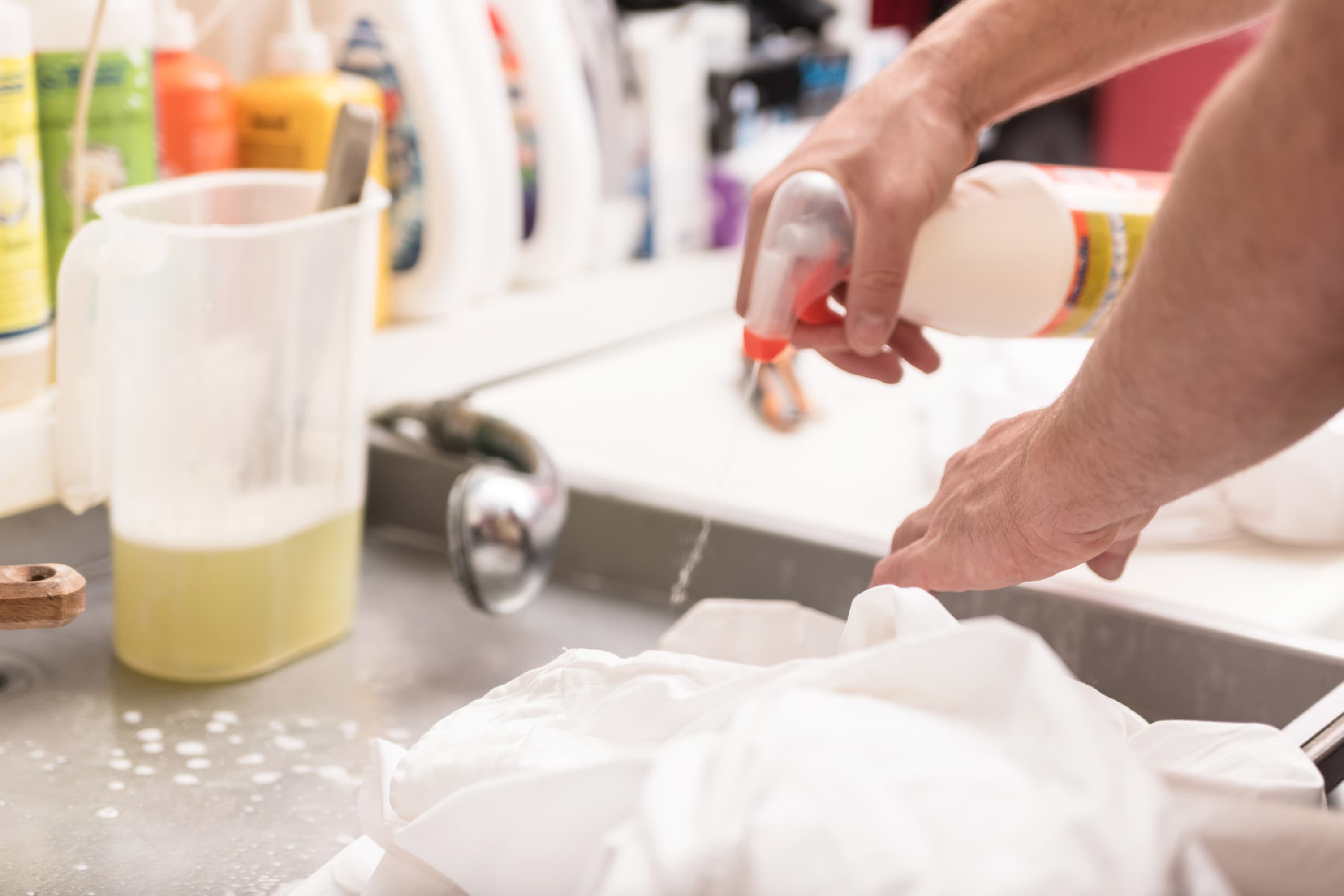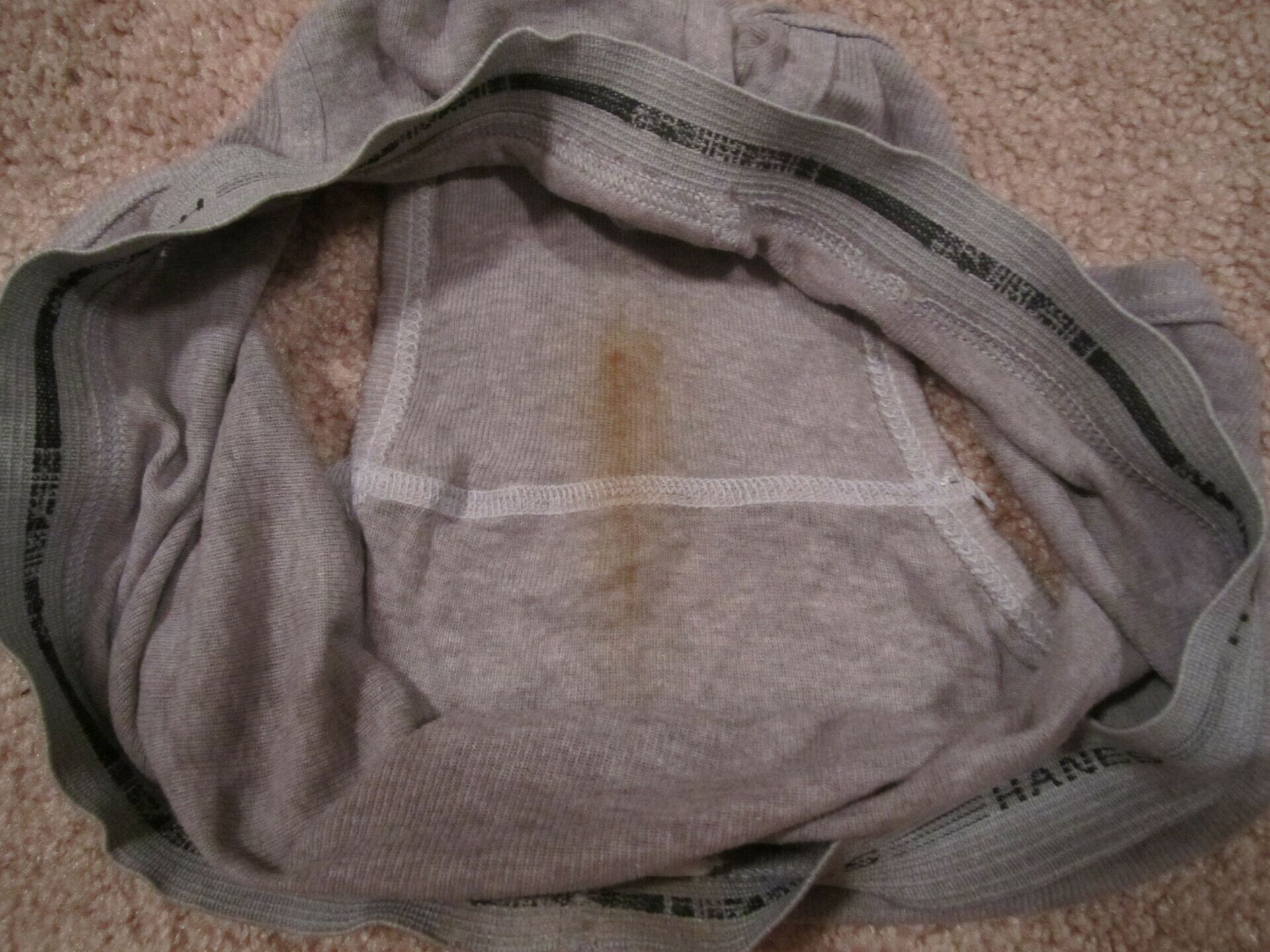

FAQs
Why Does Poop Stain Underwear
Published: July 31, 2023
Find answers to general questions like "Why does poop stain underwear?" and learn how to prevent and treat stains effectively.
(Many of the links in this article redirect to a specific reviewed product. Your purchase of these products through affiliate links helps to generate commission for Under-tec.com, at no extra cost. Learn more)
Table of Contents
Introduction
Have you ever wondered why your underwear occasionally ends up with unsightly stains? It’s a common issue that many people face, yet few understand the underlying causes. This article will delve into the reasons why poop stains can appear on your underwear and provide insights into preventing and removing these stubborn marks.
Stains in underwear are often a result of fecal matter, commonly known as poop. While it may seem embarrassing to discuss, it’s important to understand that everyone faces this issue at some point in their lives. Rest assured, it is a normal bodily function and nothing to be ashamed of.
The occurrence of poop stains in underwear can be attributed to various factors, including diet, digestive disorders, and hygiene practices. Understanding these factors is crucial in finding effective solutions to prevent and address the issue.
In this article, we will explore the different causes of stains in underwear, discuss the role of diet in staining, examine the impact of digestive disorders on stain occurrence, and provide tips for maintaining proper hygiene practices. Additionally, we will offer practical advice on how to prevent staining in the first place and share effective techniques for removing stains from underwear.
So, if you’ve ever questioned why your underwear suffers from unsightly stains, keep reading to discover the intriguing reasons behind this phenomenon and learn how to tackle it head-on. By the end of this article, you’ll have a better understanding of why poop stains occur and the strategies you can adopt to keep your underwear stain-free.
What Causes Stains in Underwear?
Stains in underwear can be a frustrating and embarrassing issue to deal with, but understanding the underlying causes can help us tackle the problem effectively. There are several factors that can contribute to stains in underwear, including:
- Incomplete Wiping: One of the most common reasons for poop stains is inadequate wiping after using the bathroom. If we don’t thoroughly clean ourselves, remnants of fecal matter can remain on the skin and transfer to our underwear.
- Leakage and Accidents: Sometimes, accidents happen, especially when dealing with loose or runny bowel movements. Leakage can occur, especially during sleep or physical activities, leading to stains on underwear.
- Irregular Bowel Movements: Inconsistent bowel movements can also contribute to stain occurrence. When we hold in bowel movements for extended periods, it can lead to harder, drier stools that are more prone to leaving residue on underwear.
- Anal Leakage: Certain conditions, such as anal leakage or seepage, can cause small amounts of stool to escape the rectum. This can happen due to muscle weakness, irritation, or digestive issues, resulting in persistent stains in underwear.
- Dietary Factors: Our diet plays a significant role in the consistency and odor of our bowel movements, which can impact underwear staining. Foods high in fat and spices, as well as excessive alcohol consumption, can lead to looser stools and increased chances of staining.
- Medication and Supplements: Some medications or dietary supplements can affect bowel movements, leading to changes in stool consistency and frequency. This can contribute to staining, especially if these changes are not anticipated or managed properly.
Understanding the causes of stains in underwear allows us to adopt proactive measures to prevent them. By addressing these contributing factors, we can minimize the occurrence of stains and maintain clean and fresh underwear. In the next sections, we will explore the impact of diet and digestive disorders on underwear staining and provide tips on maintaining proper hygiene practices to keep stains at bay.
The Role of Diet in Staining Underwear
When it comes to underwear staining, what we eat can have a significant impact on the frequency and severity of stains. Our diet plays a crucial role in determining the consistency, frequency, and odor of our bowel movements, all of which can contribute to staining. Here are some key aspects of diet that can affect underwear staining:
- Fiber Intake: The amount of fiber in our diet can greatly influence the texture of our stools. Insufficient fiber intake can lead to hard, difficult-to-pass stools that require more straining, increasing the chances of residue being left behind. On the other hand, a diet high in fiber promotes regular and softer bowel movements, reducing the risk of staining.
- Fatty and Spicy Foods: Foods high in fat and spices can stimulate bowel movements and increase the likelihood of loose or runny stools. These types of stools are more likely to leave stains on underwear. Cutting back on fatty and spicy foods can help in reducing staining episodes.
- Hydration: Staying adequately hydrated is essential for maintaining healthy and regular bowel movements. Insufficient water intake can lead to constipation, resulting in harder stools that are more likely to leave residue on underwear. Aim for drinking enough water throughout the day to keep your digestive system functioning optimally.
- Alcohol and Caffeine: Alcohol and caffeine are known to have diuretic properties, which can increase urine production and potentially lead to looser stools. Excessive consumption of alcohol and caffeinated beverages can result in stain-causing bowel movements, making it important to moderate your intake of these substances for both overall health and underwear stain prevention.
- Food Sensitivities and Allergies: Certain individuals may have specific food sensitivities or allergies that can affect their digestive system. These sensitivities can result in irregular bowel movements or an increased risk of loose stools, making it crucial to identify and manage these sensitivities to minimize staining.
By being mindful of our diet, we can take proactive measures to reduce the likelihood of staining our underwear. Incorporating a balanced diet rich in fiber, avoiding excessive intake of fatty and spicy foods, staying hydrated, and being aware of any food sensitivities or allergies are all strategies that can contribute to maintaining a cleaner and stain-free experience.
In the next section, we will delve into the impact of digestive disorders on underwear staining and explore measures to address this concern.
Digestive Disorders and Stained Underwear
While diet plays a significant role in underwear staining, certain digestive disorders can exacerbate the issue and lead to persistent stains. These disorders can affect the digestive process, stool consistency, and bowel movements, making it crucial to address them in order to reduce the occurrence of stained underwear. Let’s explore some common digestive disorders and their impact on staining:
- Diarrhea: Chronic or recurring diarrhea can be a symptom of various underlying conditions, such as irritable bowel syndrome (IBS), Crohn’s disease, or food intolerances. Loose or watery stools that accompany diarrhea can result in more frequent and intense staining of underwear.
- Constipation: On the other end of the spectrum, constipation refers to infrequent or difficult-to-pass bowel movements. It can result from factors such as inadequate fiber intake, dehydration, or certain medications. Constipation can lead to harder stools that are more prone to leaving stain-causing residue on underwear.
- Inflammatory Bowel Disease (IBD): Conditions like Crohn’s disease and ulcerative colitis, collectively known as inflammatory bowel disease (IBD), can cause inflammation and damage to the digestive tract. This can lead to irregular bowel movements, diarrhea, and increased staining episodes.
- Hemorrhoids: Hemorrhoids are swollen blood vessels in the rectum or anus that can cause discomfort and bleeding during bowel movements. The presence of hemorrhoids can contribute to staining underwear, especially if they result in incomplete wiping or irritation in the anal area.
- Gastrointestinal Infections: Infections like gastroenteritis or food poisoning can cause diarrhea or loose stools, potentially leading to more frequent and severe staining. These infections may also disrupt the normal digestive balance, resulting in changes in stool consistency and bowel movements.
If you suspect that you have a digestive disorder contributing to underwear staining, it is important to consult with a healthcare professional for proper diagnosis and guidance. They can help identify the underlying condition and recommend appropriate treatment options to manage symptoms and reduce staining episodes.
Addressing digestive disorders through medication, dietary modifications, and lifestyle changes can significantly alleviate symptoms and lessen the occurrence of stained underwear. By managing these disorders effectively, you can work towards a cleaner and more comfortable experience.
In the next section, we will focus on the importance of hygiene practices and how they can help mitigate the risk of staining underwear.
Hygiene Practices and Stains in Underwear
Proper hygiene practices are essential in maintaining clean and stain-free underwear. By incorporating good hygiene habits into our daily routine, we can lessen the chances of staining and promote overall cleanliness. Here are some crucial hygiene practices to consider:
- Thorough Cleaning: One of the simplest and most effective ways to prevent staining is by ensuring thorough cleaning after using the bathroom. It is essential to wipe the anal area carefully, using toilet paper or wet wipes, until there is no residue left. Paying attention to this step significantly reduces the risk of leaving stain-causing fecal matter on underwear.
- Proper Handwashing: Washing hands thoroughly with soap and water after using the bathroom is crucial in preventing the spread of bacteria and maintaining overall hygiene. Remember to lather your hands for at least 20 seconds, ensuring that all areas are cleaned, including under the nails and between fingers.
- Regular Changing of Underwear: Changing underwear regularly, ideally once every day, is important to prevent the build-up of bacteria and fecal matter. Fresh underwear reduces the chances of stains caused by lingering residue and promotes better overall hygiene.
- Using Proper Underwear: Choosing underwear made from breathable materials, such as cotton, can help maintain better hygiene. Breathable fabrics allow for proper air circulation and reduce moisture buildup, which can contribute to bacterial growth and staining.
- Proper Storage and Laundering: It’s important to store clean underwear in a dry, clean environment to prevent contamination. Additionally, following the appropriate laundering instructions can help remove any stains and ensure that underwear remains fresh and free from bacteria.
- Avoiding Tight-Fitting Clothing: Wearing tight-fitting clothing, particularly underwear, can create a warm and moist environment that promotes bacterial growth. Opting for looser, more breathable clothing can help reduce the risk of staining and maintain better overall hygiene.
By practicing proper hygiene, we can reduce the chances of staining our underwear and promote better overall cleanliness. Remember, these practices should be followed consistently to ensure long-term effectiveness in preventing stains.
In the next section, we will provide valuable tips for preventing stains in the first place and offer effective techniques for removing stains from underwear.
How to Prevent Staining Underwear
Preventing stains in underwear requires a proactive approach and a combination of lifestyle changes and good hygiene practices. By implementing the following tips, you can significantly reduce the occurrence of stained underwear:
- Ensure Adequate Wiping: Take the time to thoroughly clean the anal area after using the bathroom. Use toilet paper or wet wipes to wipe until there is no residue left. Paying attention to this step is crucial in preventing stain-causing fecal matter from transferring to underwear.
- Stay Hydrated: Drink plenty of water throughout the day to maintain proper hydration. Adequate hydration helps in maintaining regular bowel movements and preventing constipation, which can contribute to staining.
- Follow a Fiber-Rich Diet: Incorporate fiber-rich foods into your meals, such as fruits, vegetables, whole grains, and legumes. A diet high in fiber promotes regular bowel movements and reduces the risk of stain-causing residue remaining in the anal area.
- Avoid Trigger Foods: Identify foods that may exacerbate loose stools or cause digestive issues for you, such as spicy foods, fatty foods, or certain food sensitivities. Limit or avoid these trigger foods to minimize the chances of staining.
- Practice Good Toilet Habits: Avoid delaying or rushing bowel movements. Listen to your body’s natural cues and use the bathroom when you feel the urge. This helps in avoiding stool retention and harder stools that can leave residue on underwear.
- Consider Using a Bidet or Wet Wipes: For an extra level of cleanliness, you may consider investing in a bidet attachment for your toilet or using wet wipes to ensure thorough cleaning of the anal area after using the bathroom.
- Regular Exercise: Engage in regular physical activity to keep your digestive system functioning optimally. Exercise helps in stimulating bowel movements and reducing the chances of constipation or irregular bowel habits that may lead to staining.
- Maintain Proper Hygiene Practices: Follow proper handwashing techniques after using the bathroom and change your underwear regularly to maintain cleanliness and prevent the spread of bacteria.
Implementing these preventive measures consistently will go a long way in keeping your underwear stain-free. Remember, it may take some time to adjust to new habits and dietary changes, so be patient with yourself and give your body time to adapt to healthier practices.
In the next section, we will provide tips for removing stains from underwear, helping you tackle any existing stains that may have already occurred.
Tips for Removing Stains from Underwear
If you’re dealing with stains on your underwear, don’t worry – there are effective methods for removing them. Here are some tips to help you tackle those stubborn stains:
- Act Fast: The key to successfully removing stains is to act as soon as possible. The longer a stain sits, the more difficult it becomes to remove. As soon as you notice a stain, take action.
- Pre-Treat the Stain: Before washing your underwear, pre-treat the stained area. You can apply a stain remover, a paste made from baking soda and water, or even liquid dish soap directly to the stain. Gently rub the pre-treatment into the fabric using your fingers or a soft brush.
- Soak in Cold Water: If the stain is particularly stubborn, soak the affected underwear in cold water for about 30 minutes before washing. Cold water helps loosen the stain and prevents it from setting further into the fabric.
- Use the Right Detergent: Choose a detergent that contains enzymes or bleach alternatives, specifically designed for removing tough stains. Read the label instructions and use the recommended amount.
- Check the Care Instructions: Before washing your underwear, make sure to check the care instructions on the label. Follow the recommended washing instructions to ensure that the fabric is not damaged during the cleaning process.
- Wash with Like Colors: It’s best to wash your stained underwear with similar colors or separately to prevent color bleeding onto other garments.
- Avoid High Heat: When drying your underwear, avoid high heat settings in the dryer as it can set the stain permanently. Instead, air dry the underwear or use a low-heat setting.
- Repeat if Necessary: For persistent stains, don’t be discouraged if they don’t come out after the first attempt. Repeat the pre-treatment and washing process until the stain is completely gone.
- Try Natural Stain-Removing Methods: If you prefer more natural methods, you can try using lemon juice, vinegar, or hydrogen peroxide as stain removers. However, be cautious when using these ingredients on colored fabrics, as they may cause discoloration.
Remember, the effectiveness of stain removal methods may vary depending on the fabric and the type of stain. If the stain persists or if you’re unsure about the best approach, consult a professional cleaner or laundry expert for further assistance.
By following these tips, you can successfully eliminate stains from your underwear and restore them to their original cleanliness.
Now that we’ve explored techniques for removing stains, it’s time to conclude this article and summarize the key points discussed.
Conclusion
Dealing with stains on underwear can be frustrating and embarrassing, but understanding the causes and implementing preventive measures can minimize their occurrence. Throughout this article, we’ve discussed various factors that contribute to stains in underwear, including inadequate wiping, leakage and accidents, irregular bowel movements, diet, digestive disorders, and hygiene practices.
By following good hygiene practices, such as thorough cleaning, proper handwashing, regular underwear changes, and using breathable materials, you can reduce the risk of staining. Additionally, adopting a fiber-rich diet, staying hydrated, and being mindful of trigger foods can promote regular bowel movements and minimize the chances of loose or hard stools contributing to stains.
If you’re already dealing with stains, our tips for stain removal, such as acting quickly, pre-treating the stain, and using appropriate detergents, can help you effectively eliminate the stains from your underwear.
Remember, it’s important to be patient and consistent when implementing preventive measures and removing stains. Everyone’s body is different, and it may take time to find the approach that works best for you.
By understanding the underlying causes of staining, implementing preventive measures, and maintaining good hygiene practices, you can keep your underwear clean and stain-free. Don’t let stains on your underwear cause frustration or embarrassment – take control and enjoy the confidence and comfort of fresh undergarments.


